Chris Parkin puts the Delta Pro’s claim of half MOA out of the box to the test in this extensive review of the Daniel Defense Delta 5 Pro rifle, tested here in 6.5 Creedmoor
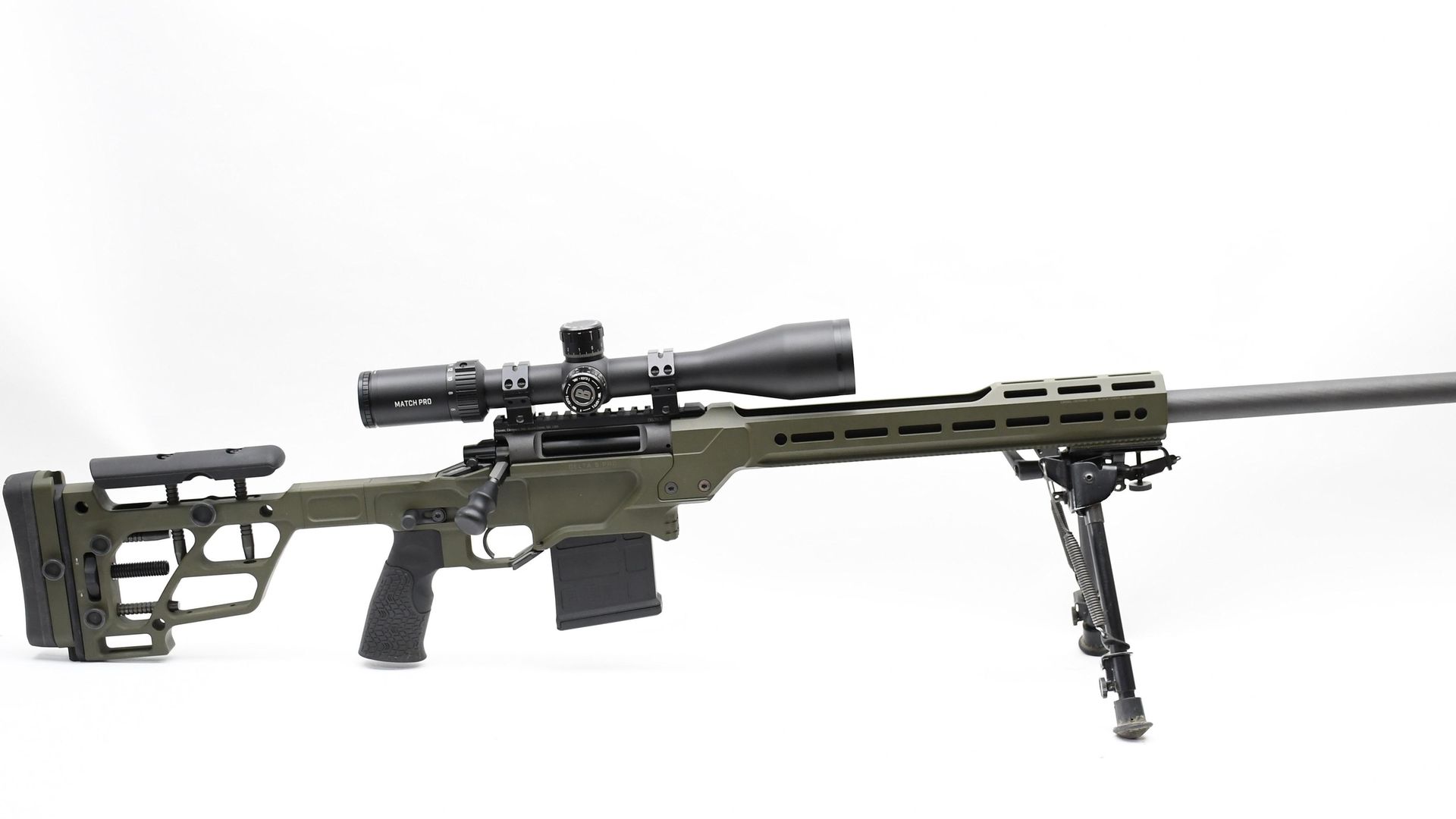 credit: Chris Parkin
credit: Chris Parkin
The Daniel Defense Delta 5 in synthetic format was certainly a new name for the UK market, yet it may well be the Pro version that really sparks enthusiasm for the brand. It sets out with bold claims from the word go with a half MOA accuracy guaranteed at 100 yards with “quality factory match-grade ammunition” which is a bold claim… “If we can do it, so can you.” Guaranteed they say!
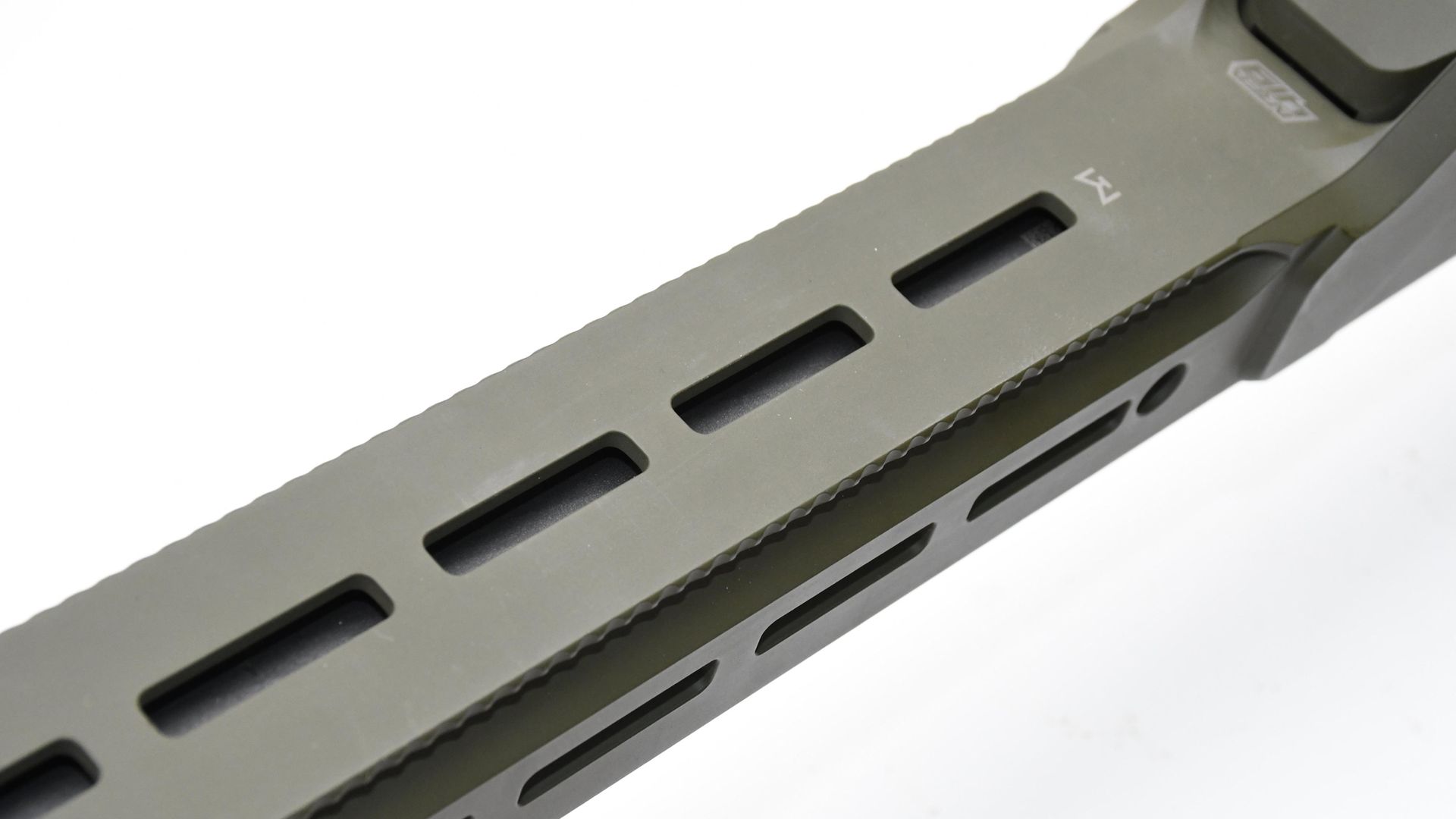 credit: Chris Parkin
credit: Chris Parkin
The first step with any rifle is taking it out of the box and I noted the carboard outer was marked ‘Grade 1-Barrel Marked’, which may or may not imply quality control standards have allotted this one a premium role? Regardless, the rifle emerges and to my eyes, after seeing countless new guns, immediately began ticking the boxes and confirming this thing was designed by actual shooters.
The barrel is cold-hammer-forged, showing an external spiral twist to the very heavy profile, with 22.3mm measured at the muzzle. This is capped with 6 lateral ports for a muzzle brake which is left-hand threaded with a lockring to index it as desired on the 5/8-24" TPI thread.
This 6.5 Creedmoor has a 1:8" twist and the rifle is also available in .308 with a 1:10 or 6mm Creedmoor 1:7.5 for the slippery 6mm bullets growing in popularity for even less recoil. Overall barrel length is 26"/660mm with a straight taper swelling towards the action within a tubular chassis forend.
The forend is super stiff and fully free-floated with copious M-Lock slots on the left, right and upper quadrants of its quasi-hexagonal profile. An Arca Swiss rail is machined into the full length of the underside with the giant 38mm RRS-compatible dovetail running 290mm backwards, almost to the tapered start of a hard-faced barricade stop with grooves for grip on soft bags or timber surfaces.
The aluminium chassis is beautifully made with detailed machining to complete complex shapes to relieve weight where necessary. Fasteners are T25 Torx, and although they’re built in modular sections, you must look to find the joints from forend to receiver prior to the rear butt extension.
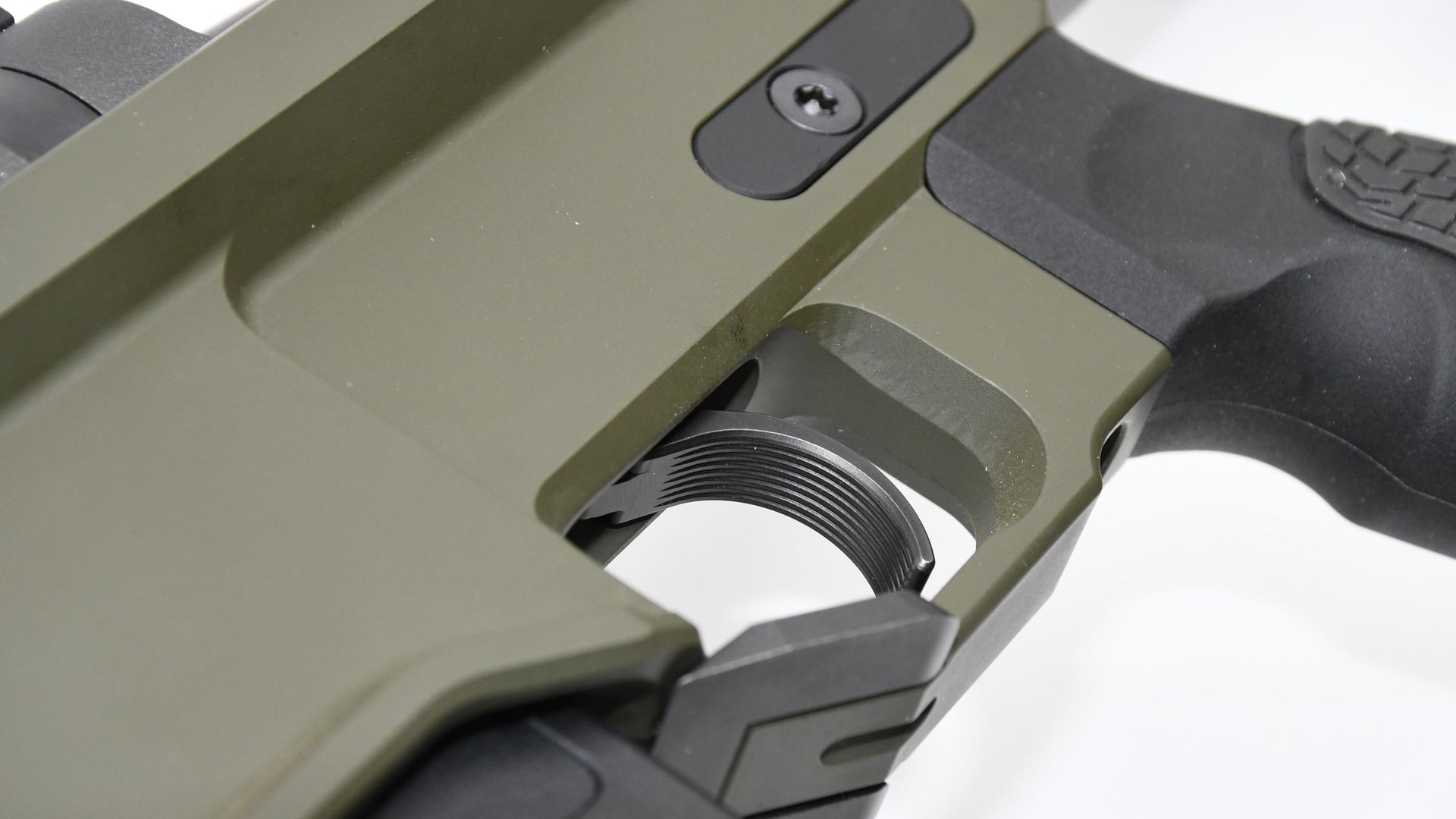 credit: Chris Parkin
credit: Chris Parkin
A ten-round, AICS-compatible magazine system is slung below, machined into the chassis, with a similar trigger guard showing an ambidextrous release lever ahead of the blade. There were no loading or unloading hang-ups during testing with the mag slotting in easily up to a solid click each time and dropping free under its own weight at changeover.
An AR-15 derived grip behind offers a decent 72mm reach from its throat to the hand-filling, angled, ambidextrous, firm, rubber-textured grip with a Daniel Defence ‘DD’ cap at its base. A nice feature above is a thumb rest that is both ambidextrous and adjustable by 11mm for added comfort.
The receiver region flows towards the butt of the rifle with a 32mm deep, 25mm wide hollowed aluminium bar bridging across. It’s removable but shows keyways to ensure it’s not going to twist. I’m so picky over stock ergonomics that I get gritty on the detail and I have to say, the DD chassis is currently my number one and here is why.
The cheekpiece, as well as vertical adjustability, has lateral movement and when shooting, this moves the whole rifle into a ‘gold medal position’ because head position is simply better. It might only be 3.5mm either way, but coupled with a massive 47mm of vertical travel, the rifle is an assured fit from the smallest objective lens to a ridiculously tall scope mount.
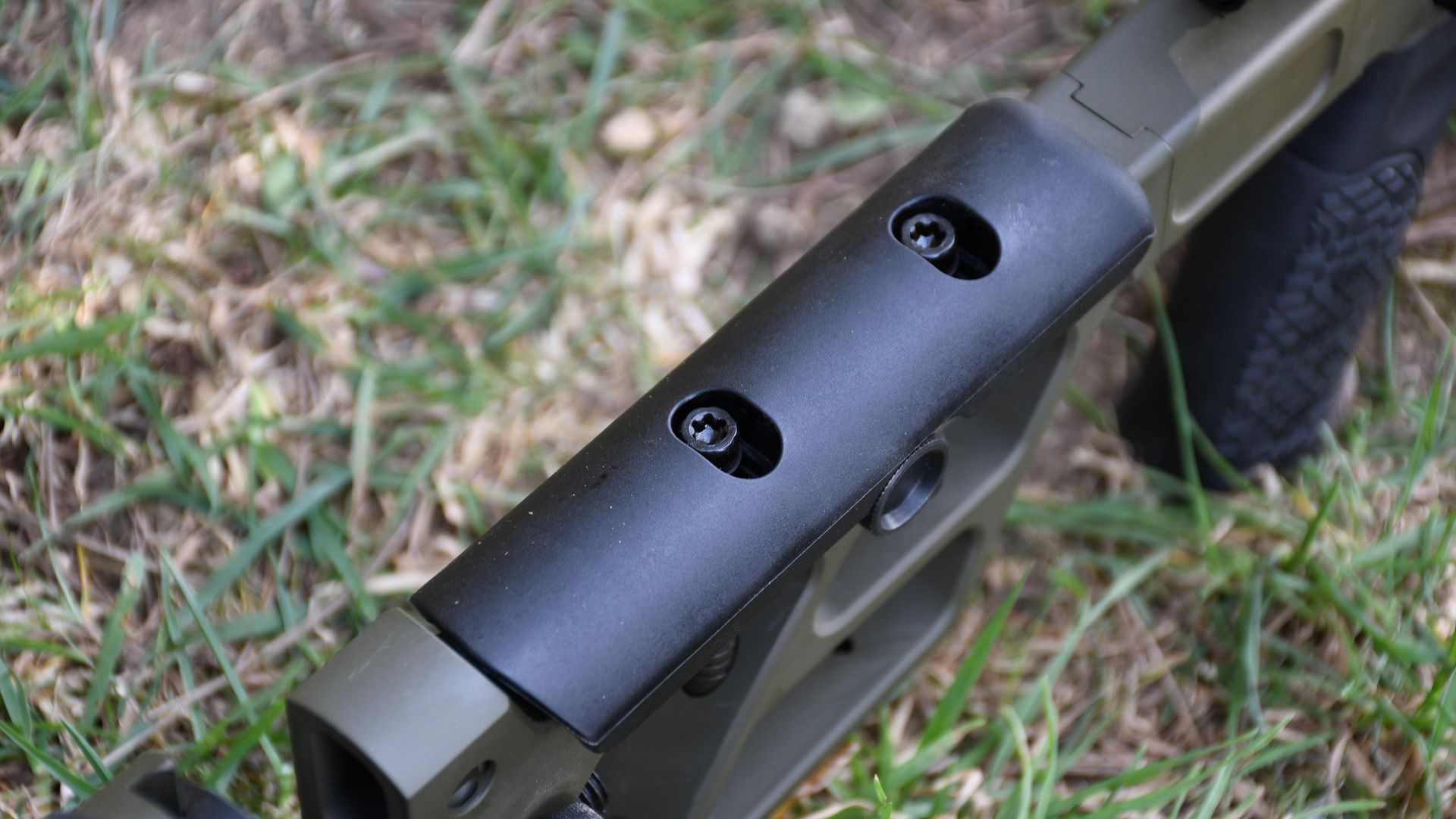 credit: Chris Parkin
credit: Chris Parkin
It boggles me why more competitors do not add this tiny feature, and interestingly, the 50mm spacing of the 8.5mm posts was identical to that of the MDT chassis I was using on the Mauser M18, so I swapped them over and enjoyed a better head position on that rifle. A few extra pennies spent on design and components can make for a huge improvement.
The posts carry grooves to show position and there is a single fastening knob that can be swapped either side. If you really want, two grub screws will permanently lock position and better still you don’t need to take the cheekpiece out to remove the bolt. The underside shows a large cutout for the non-firing hand’s wrist and significant relief of material to balance the rifle slightly ahead of the barricade stop.
Three quick-detach stud anchors are shown either side with one on the forend and the underside butt hook, which is just big enough to grasp with the web of the hand with all edges chamfered for comfort. The bag rider is also slotted for accessories like a monopod.
To add that finishing touch, the recoil pad’s length of pull and vertical position are also adjustable. This time, there are two locking dials, again with opposing grub screws for permanent lockdown, and a central threaded bar with a spinning nut allowing fine control of length of pull from 13.5"/343mm to 15"/382mm. The butt pad itself sits on a dovetailed aluminium rail for vertical travel with markers 20mm below or 55mm above its central position and like everything else, locks 100% solidly with minimal force needed, just a fingertip nip needed to lock them with no hint of corner cutting. This stock is a class apart, although, just to note, a C-clip was meant to have been supplied to indicate its position on the cheekpiece, but I never found it in the box.
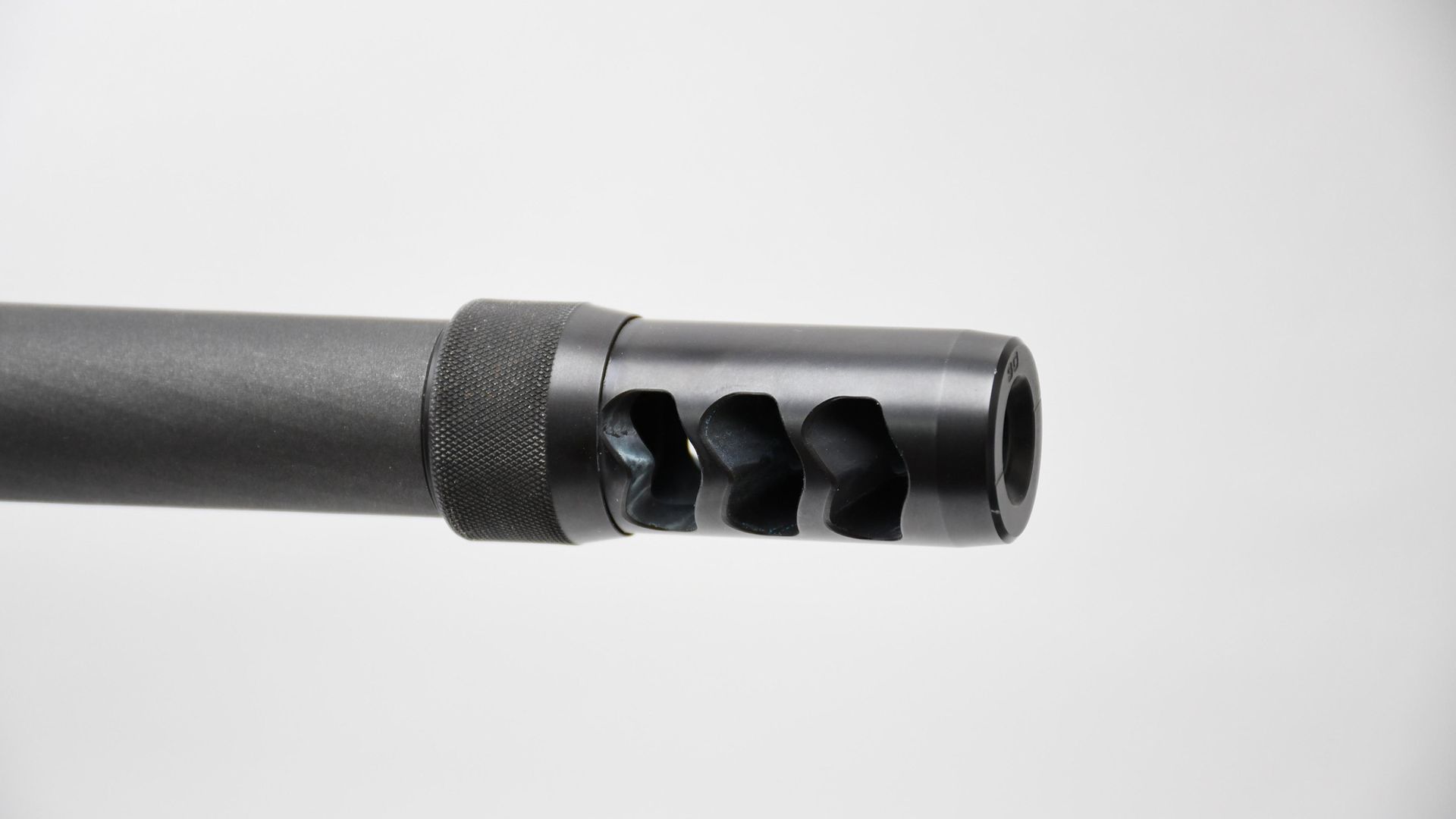 credit: Chris Parkin
credit: Chris Parkin
Action overview
The action is a three-lug affair with 60° handle lift to cock on opening and a push-feed bolt face with extractor claw and sprung plunger ejector.
It’s interesting to note that upon clean up and repackaging/photography, there were no traces, and I mean zero, of any brass swarf or combustion residue on the bolt face and that must be a first. It looked as fresh as the day it was coated. This is clearly an indication of the smooth surface finishing standards and linear cartridge feed from the magazine, thereby avoiding scrapes as the round is chambered.
The cylindrical action has a 35mm external diameter, so the bolt within at just 17 seems skinny in comparison. The three lugs on the head sit ahead of the joint from main shaft which illustrates interchangeability for alternate cartridge sizes.
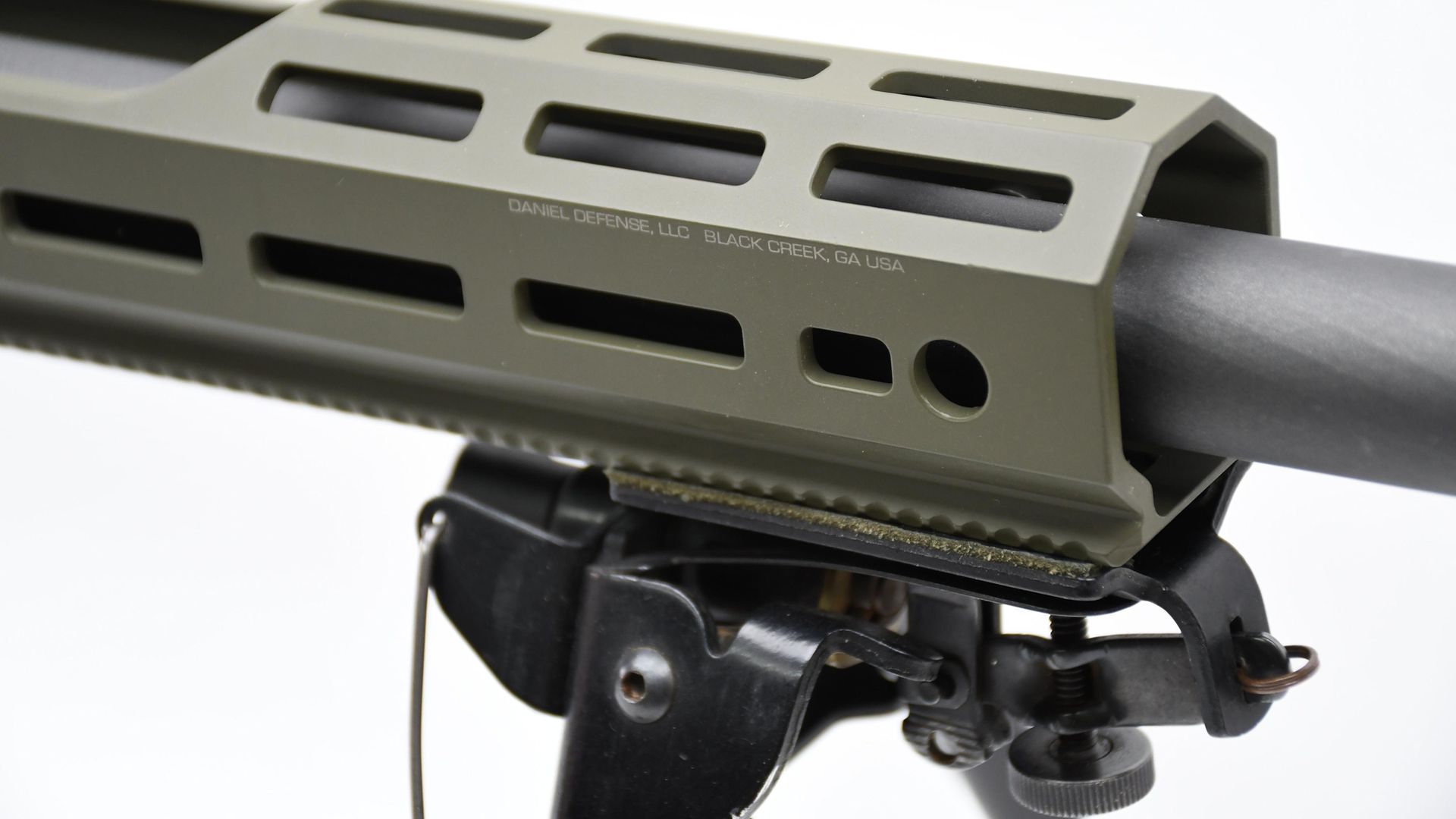 credit: Chris Parkin
credit: Chris Parkin
I suppose this is something of a future-proofing exercise, as currently all three available chamberings for the DD will use the same .308, 0.473" face diameter anyway. A barrel nut is used ahead for fixture and headspacing of the pipe with this and other action details below, visible after a full disassembly job requiring 4 screws removed to separate the tubular forend.
This is a very snug fit and, when tightened, the screws draw its tapered wings into an even firmer fit, another small detail that gives the modular stock assembly a truly one-piece feel without any wobbles or rattles anywhere. Twin T30 screws anchor the receiver in place with no appreciable stress when seated. A small recoil lug on the underside of the action mates into a recess in the aluminium chassis with a lateral V-groove type arrangement for action bedding along its length.
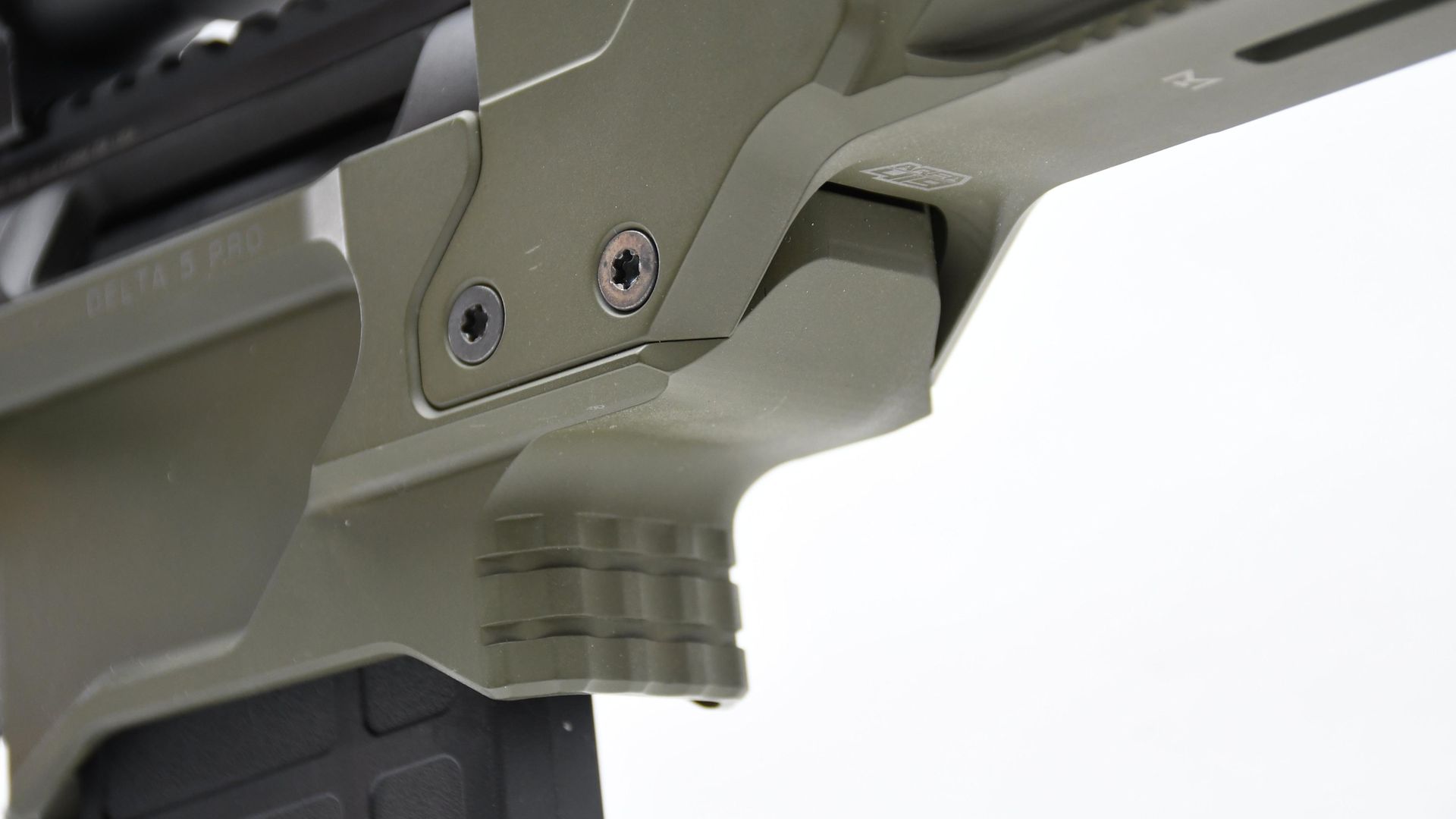 credit: Chris Parkin
credit: Chris Parkin
Trigger time
A Timney trigger is slung below and and is fully adjustable for weight, sear engagement and overtravel with clear engraved markings and no blobs of threadlock or anti-tamper seals in evidence. The trigger broke very crisply on the test rifle at 1620gr with no discernible creep.
Although sounding heavier than many think a target-oriented rifle should, I quite liked it as the broad 10mm grooved blade allowed surety of feel through gloves and the consistent application of growing pressure to somewhat ‘time’ shots when faced with relatively unstable positions. It suits my style and some of my own older rifles with exceptionally light Jewell triggers now feel rather urgent in comparison, which I no longer favour.
Tastes change as do circumstances so trigger adjustability is a great factor to consider for a long-life rifle that can be re-barrelled and theoretically outlast you. Bolt travel is 102mm and there is a 73mm rectangular ejection port with radiused corners to spin brass free. Another unusual factor is that the brass leaves no characteristic golden ‘dink’ marks to the rear of the opening, as is common with so many rifles, as it spins freely away.
Feed and function from the single column magazine is effortless and single rounds dropped into the port would chamber smoothly as the bolt closed without stuttering. The mag needs full removal to load and a polymer Magpul unit is supplied; these damage brass the least with quiet operation and a polymer follower. Long brass life is assured as the ejector is medium weighted to avoid battering the neck against the chamber wall as the case is extracted and flicks to the right.
The bolt handle is a modest 70mm overall length and the knobs are replaceable if desired. I didn’t really like the one fitted; it looked OK and smoothly finished and if left alone, would have been the ideal shape of the old Badger Ordnance ones, but it has a central groove that seems to be exactly where you don’t want it, but each to their own I suppose.
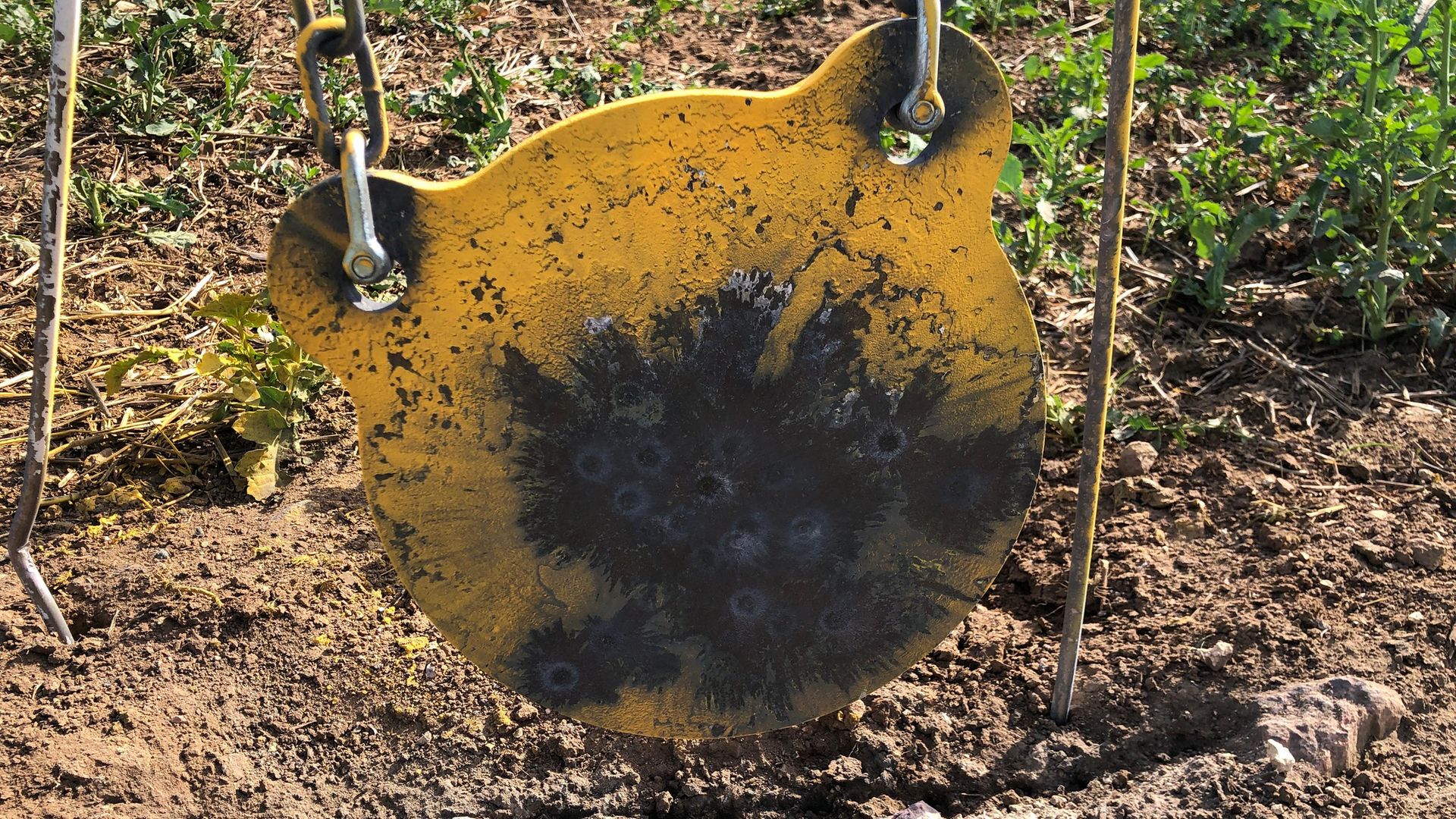 credit: Chris Parkin
credit: Chris Parkin
A little wiggle
At its full extension, there was approximately 6mm of lateral play at the tip of the shroud and this is perhaps a little more than ideal. Although bolt operation was smooth enough in feel and reliably operable, It was possible to jam it when rushed, something I always notice because I change rifles so frequently – some are just prone to it whilst a few are almost immune to jamming.
This wobble is something shoppers will always pick up on. They can’t shoot the rifles in the shop, but they can waggle the bolt as it is cycled, at which point they’ll assume it to be detrimental to rifle performance. There are many factors to bolt operation and handling speed, this is just one, but bolt waggle is perhaps the most obvious and one commonly quoted by shooters when critiquing rifles.
A 20 MOA Picatinny rail is screwed to the action in four locations, so on with a scope and off to the range to see if I can make good on that claimed of ½ MOA out of the box. Well, no 1, the stock ergonomics make this rifle a joy compared to some of its peers, so first praise goes there. The “419 HELLFIRE” muzzle brake is advertised to be made from “17-4 PH stainless steel” and that sounds nice, but effectively, the sway towards 17% Chromium errs towards superior corrosion resistance.
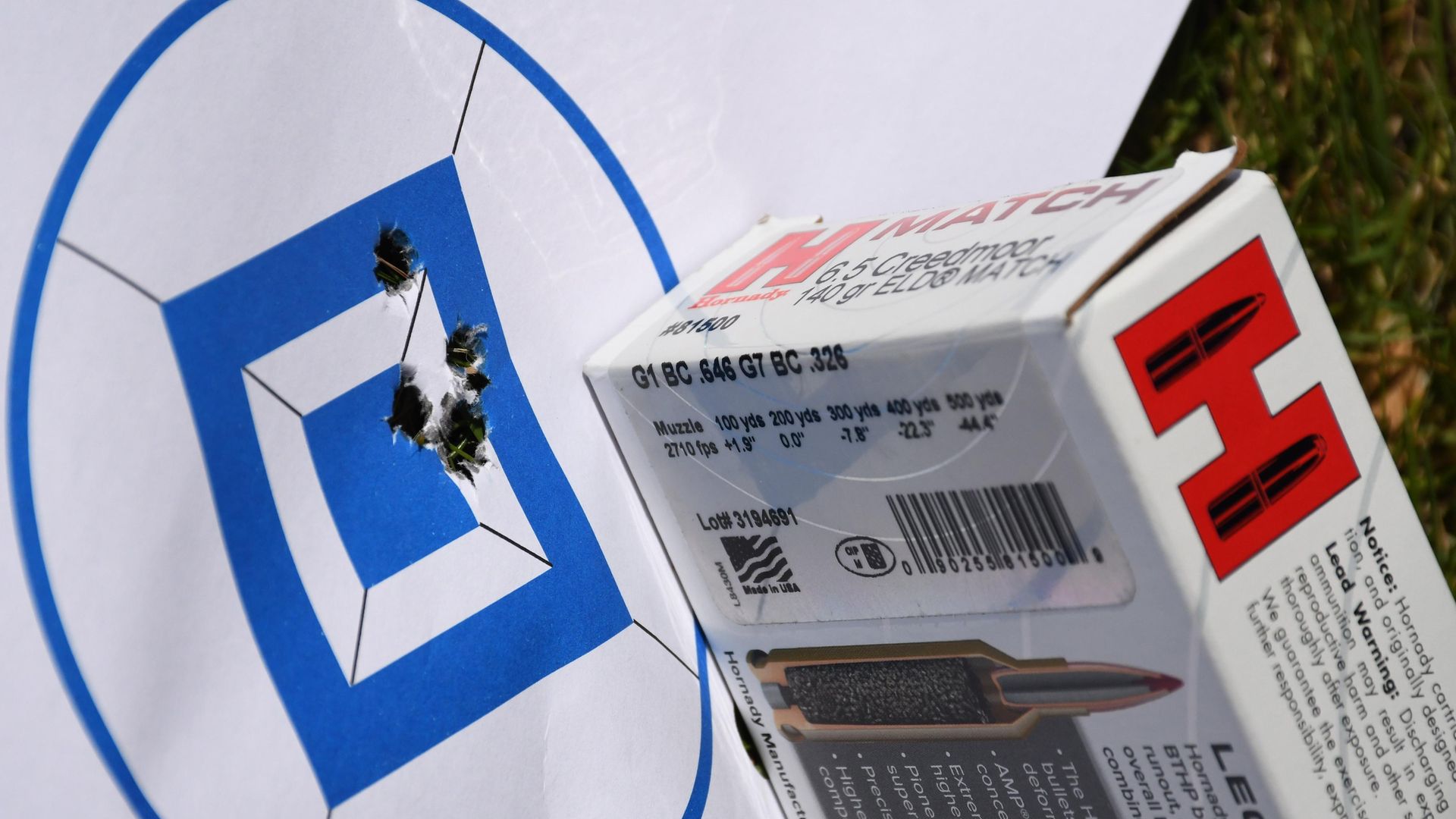 credit: Chris Parkin
credit: Chris Parkin
Brakes generally fall somewhere between volume and effective recoil reduction, so the noisier they are, the less recoil is usually felt. This one was pleasantly middle of the road, the felt recoil was almost zero with no muzzle flip at all. The stock layout with recoil directed centrally into the recoil pad plus the heavy weight being a significant factor in recoil reduction, but I didn’t feel the need for earplugs as well as defenders. There was also no irritating concussion transmitted through the heavy barrel and chassis which was another pleasing factor.
The bag rider was big enough for a soft bag, the butt hook worked and the solid feel through the bipod’s feet allowed loading pressure on the pad to remain stable with assured fall of shot, and occasionally trace seen through the optic at just 200m. It was one of these guns that didn’t feel like you needed to physically aim it when prone, is rode well and with a slightly forward centre of balance it was certainly one of the better rifles I have used straight from the box. Plus, the M-Lock rail and Arca assembly encourages personalisation to the nth degree.
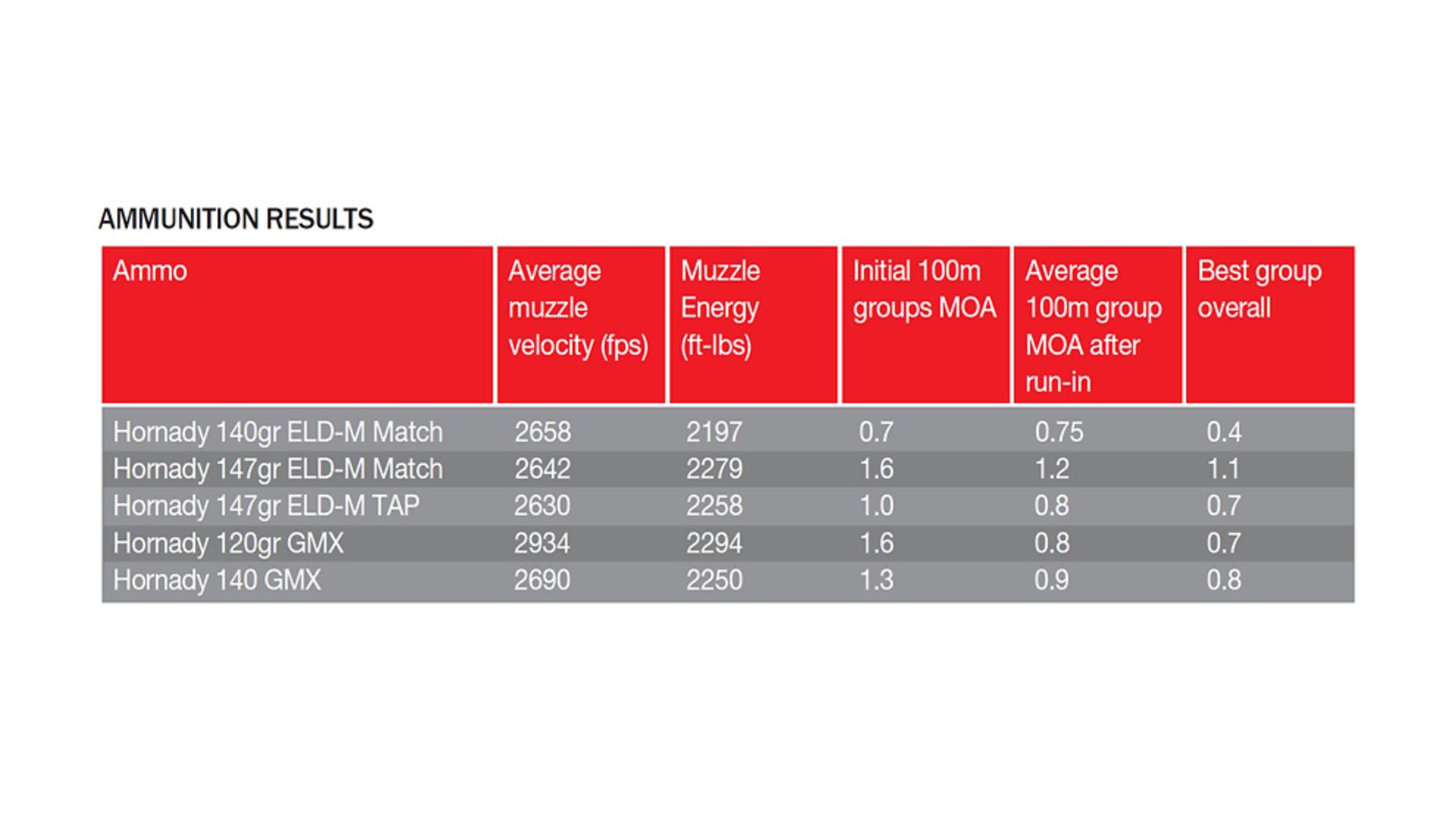 credit: Chris Parkin
credit: Chris Parkin
The bottom line
So, getting down to the nitty gritty, did the claims stand up? Well, no. I don’t have a tunnel range or a concrete bench to shoot from, but I have locations and stability consistent to real world users and I use them regularly enough with a massive variety of rifles. On paper, all the test ammo worked acceptably, but don’t expect the first rounds to simply nail that half MOA hole. After running in gently and cleaning, the barrel proved easy to live with, mostly carbon fouling and very little copper noticed. After 40 rounds, I was starting to see the groups lose their flyers and had some very pleasing shooting on steel at the farm at over 200m from various positions, so by the time I revisited the paper targets from a bench on range, I’d had about 80 rounds through the gun.
Things had settled significantly and although the gun had been delightful to shoot, it now closed down those clusters to occasional cloverleafs. Most weights shot within the sacred 1 MOA. I was delighted to see all copper 120 and 140gr GMX bullets perform well although the 120s clearly demonstrated the good group/bad group partnership with a 0.6 followed by a 1.3 MOA with no noticeable problems at my end.
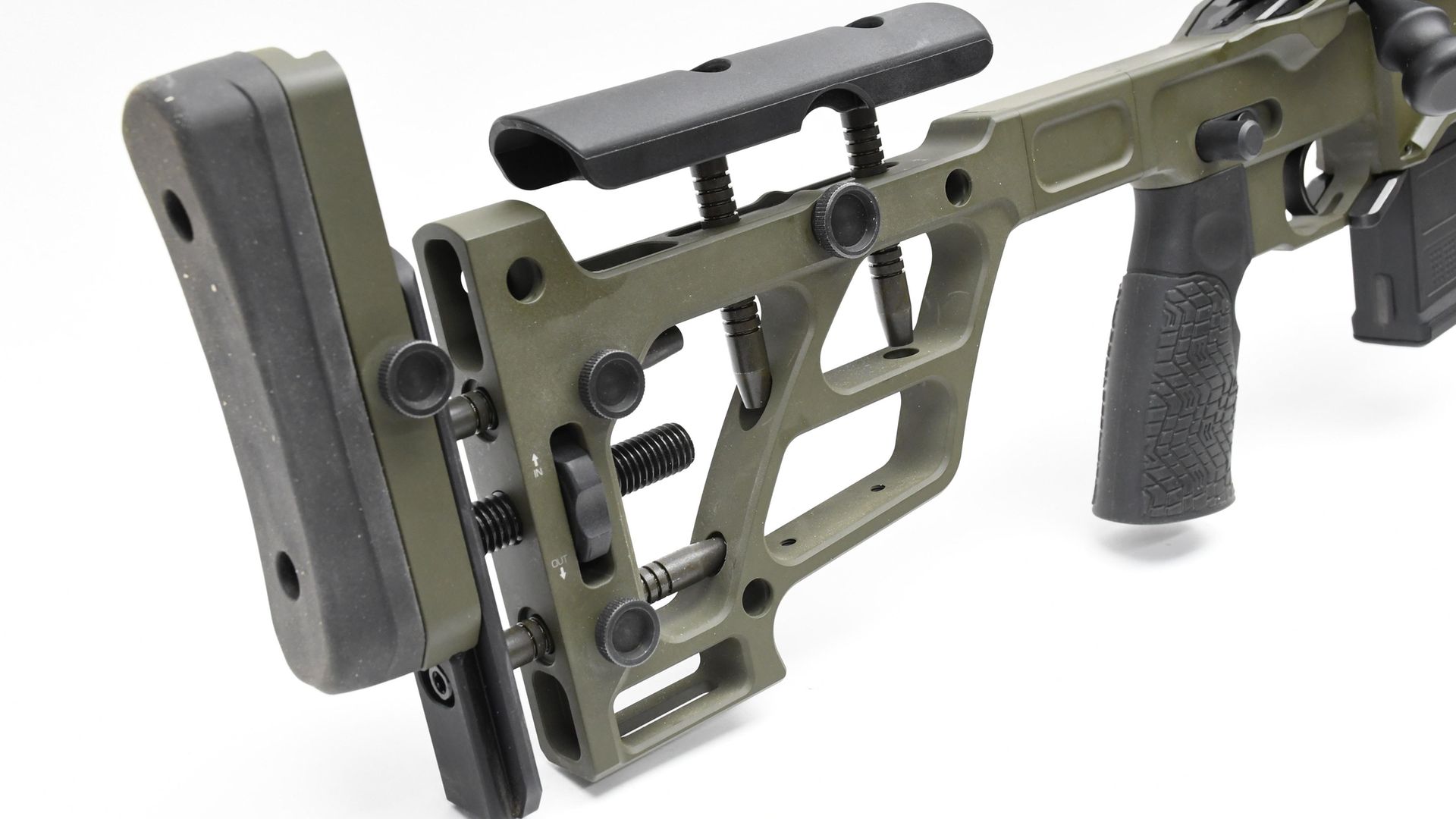 credit: Chris Parkin
credit: Chris Parkin
Overall, 140gr ELD-M Precision Match ammo did a 25-round aggregate of 0.75 MOA, but only one group, from over 150 shots in 5 ammo types fell below that magic 0.5 on paper. I was not at all surprised, it’s an almost unprovable claim in limited conditions without a known ammunition brand, blend, recipe or lot number at known air temperature, altitude and humidity. Regardless of that, my lasting impression of the Delta 5 Pro are that of a superb stock, probably the best in class thanks to solidity and adjustability of a rifle designed by shooters and engineers, perhaps right up until someone decided to make the “guaranteed half MOA” claim, which I would love to be proven wrong over.
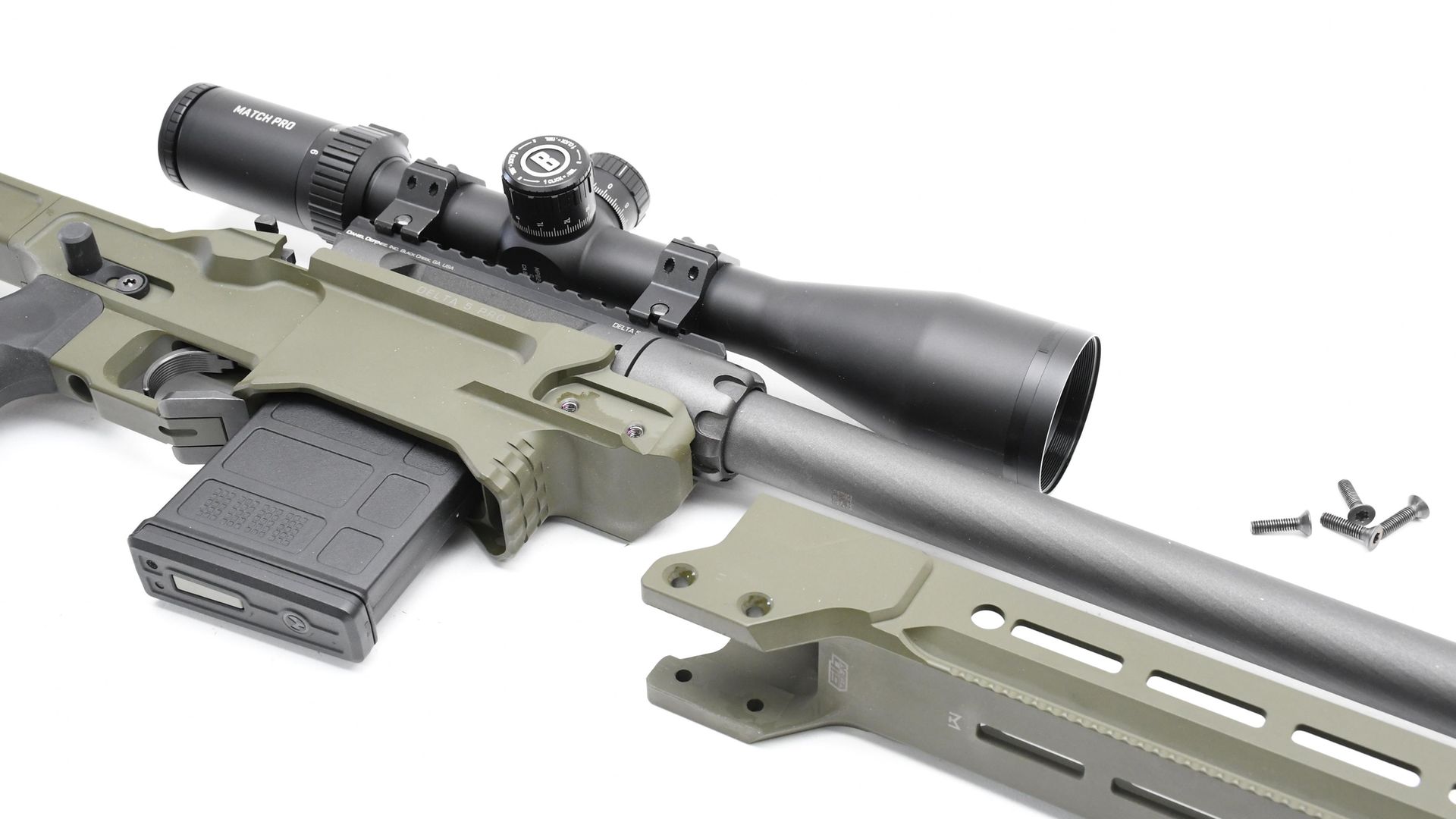 credit: Chris Parkin
credit: Chris Parkin
Pros
- Excellent stock adjustability and layout
- Timney trigger performance
- Excellent recoil control with minimal resonance from the ideally specified brake
- Barricade stop point of balance
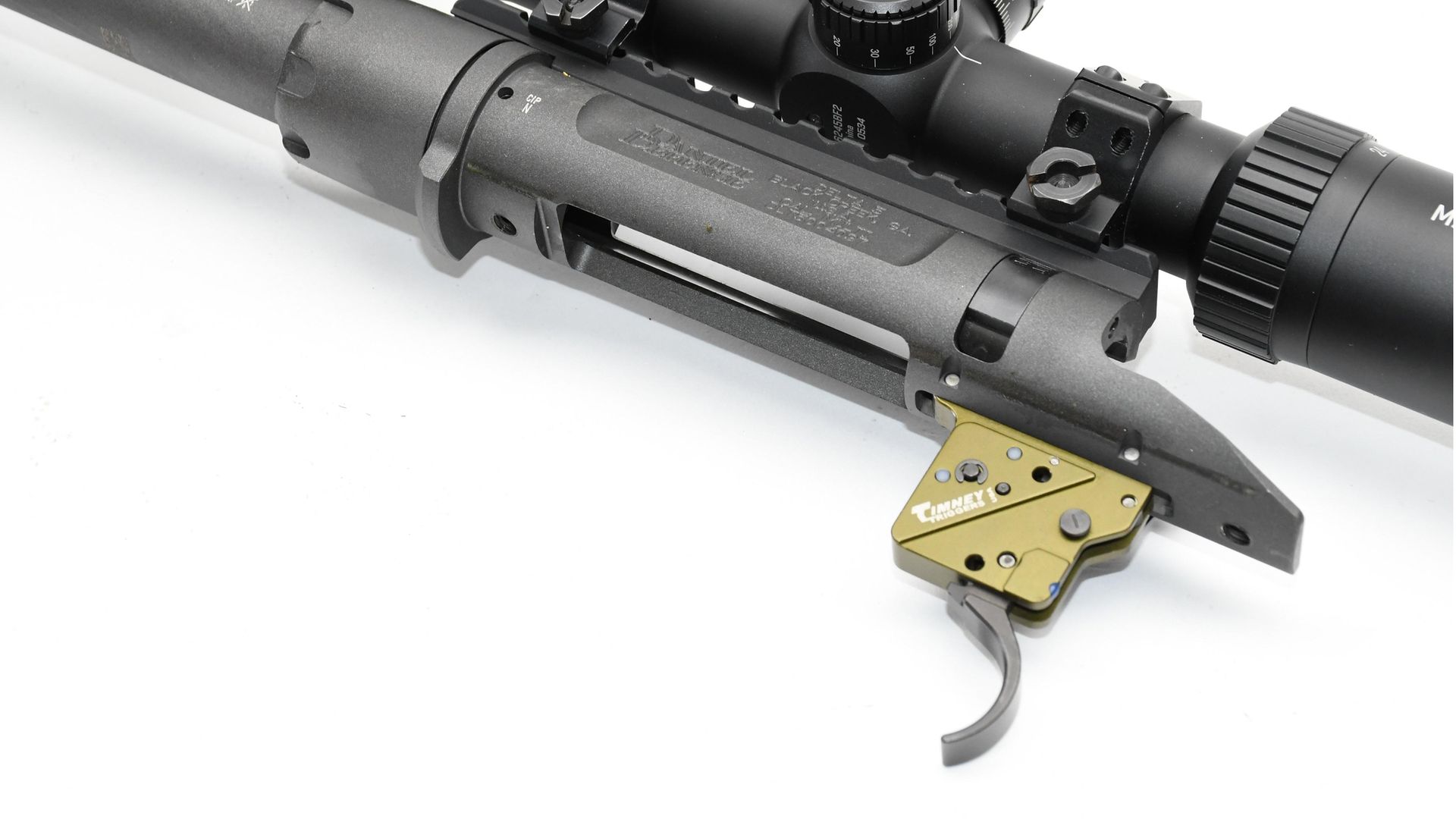 credit: Chris Parkin
credit: Chris Parkin
Cons
- A half MOA guarantee still relies on other, significant variables
- Bolt a bit sloppy at this price point with occasional jams resulting
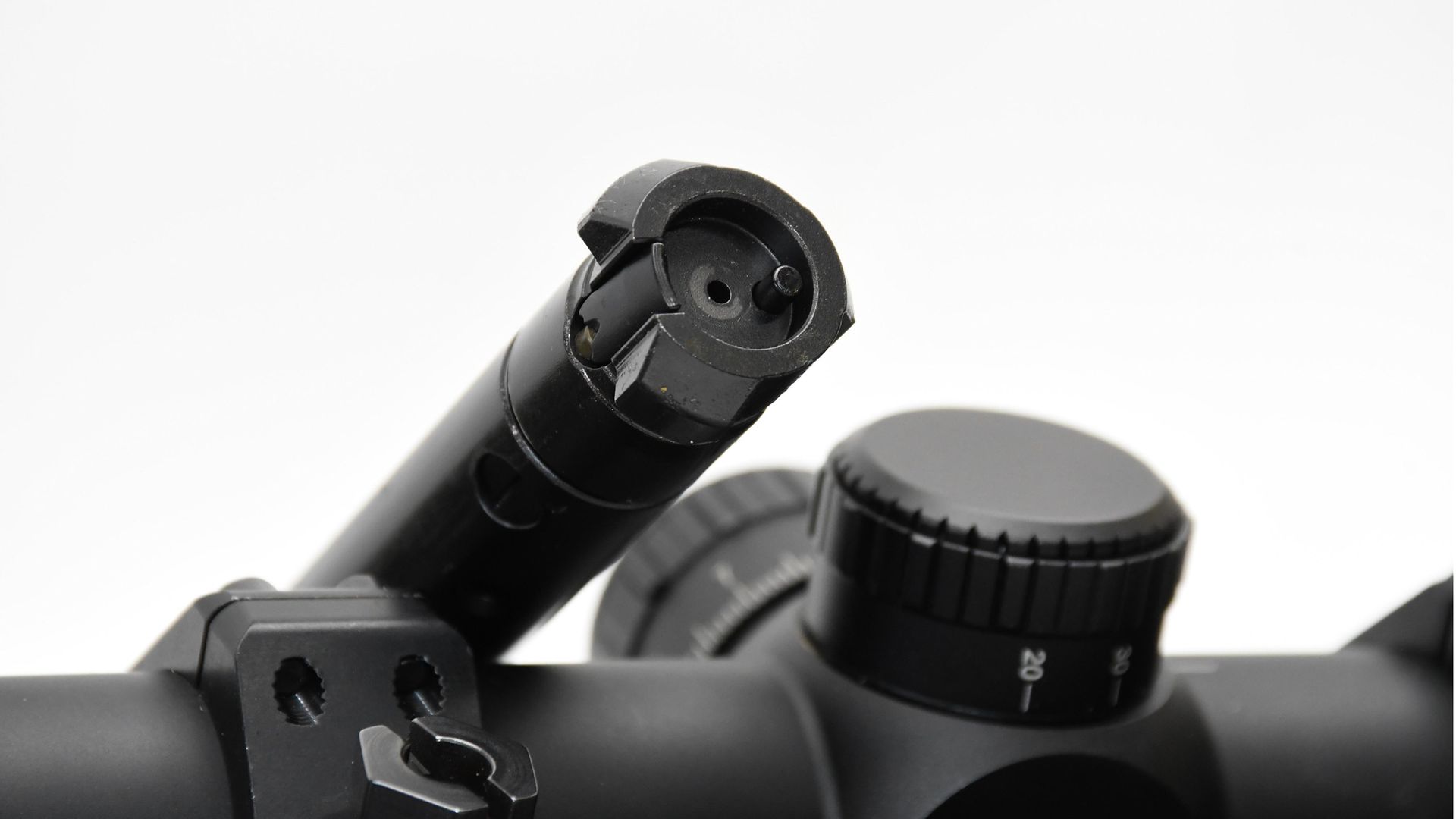 credit: Chris Parkin
credit: Chris Parkin
Opinion
A half MOA claim focuses buyers on a group size obsession which is hard to prove but the rifle is one I really enjoyed shooting, the stock geometry is peerless in my opinion
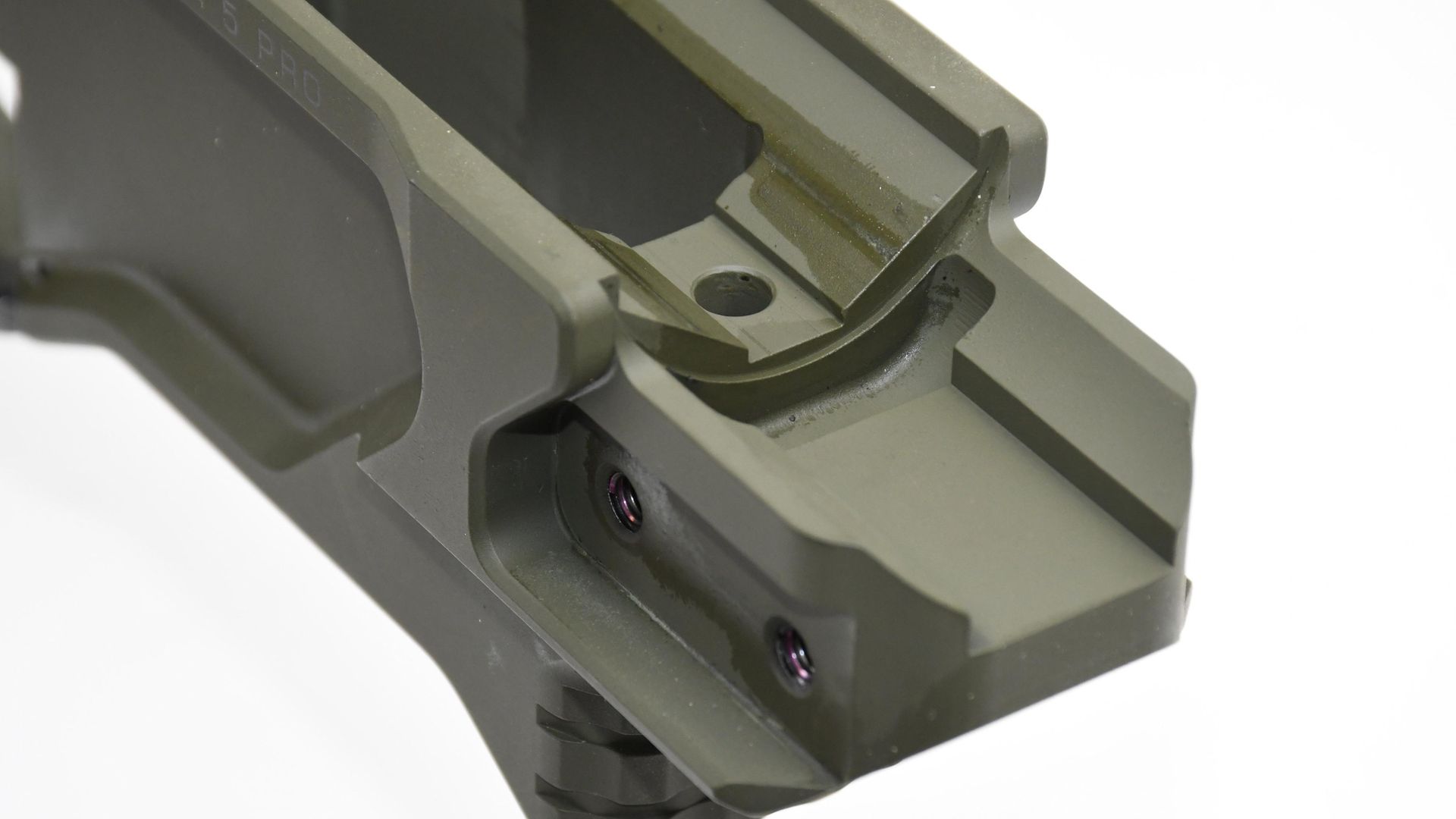 credit: Chris Parkin
credit: Chris Parkin
Specification
Barrel Colour: Cerakote
Barrel Length: (in)/(mm) 26/660
Calibre: 308, 6 and 6.5mm Creedmoor
Magazine Capacity: 10 round AICS
Length of Pull: (in)/(mm) 13.5-15/334-382
Overall Length: (in)/(mm) 46.5-48/1180-1220
Rate of Twist: (in) 1 in 8 seen on 6.5 Creedmoor
Stock Material: Aluminium, Cerakoted green
Weight: (lb)/(kg) 13.74/6.23
Trigger: Timney, fully adjustable single stage breaking /51oz. 1620gr
RRP: £3,650
Contact: Edgar Brothers
Tel: 01625 613177
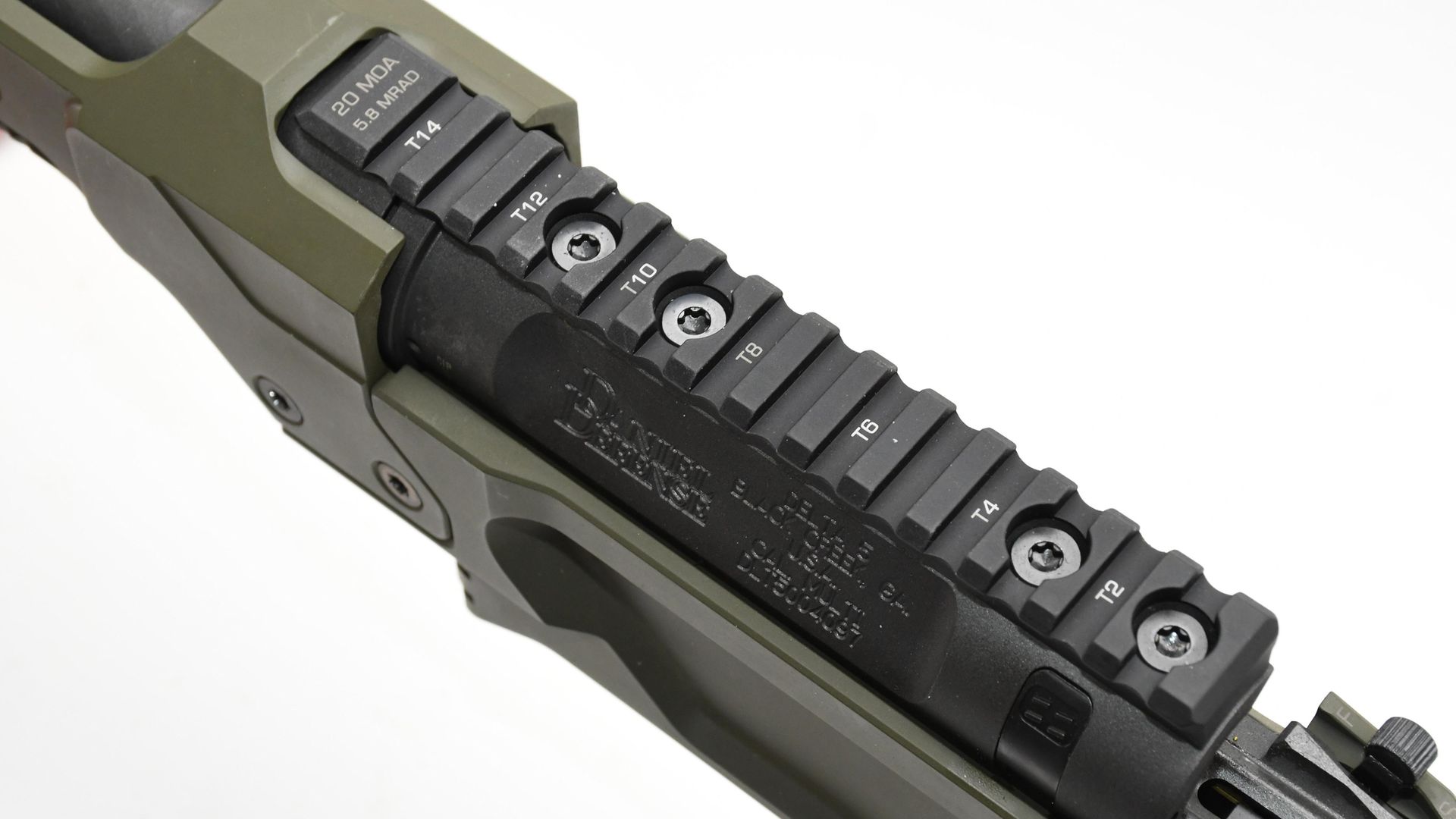 credit: Chris Parkin
credit: Chris Parkin